For years before I first visited the Pergamum Museum in Berlin, I was desperate to go there to see one particular exhibit: the famous Ishtar Gate from Babylon. Within the museum is a reconstruction of part of the gate, using both original and replica glazed tiles, which are primarily a vivid blue. It's a huge thing (almost 15 metres high and 16 metres wide) in a room which makes it impossible to get a decent picture of the whole thing.
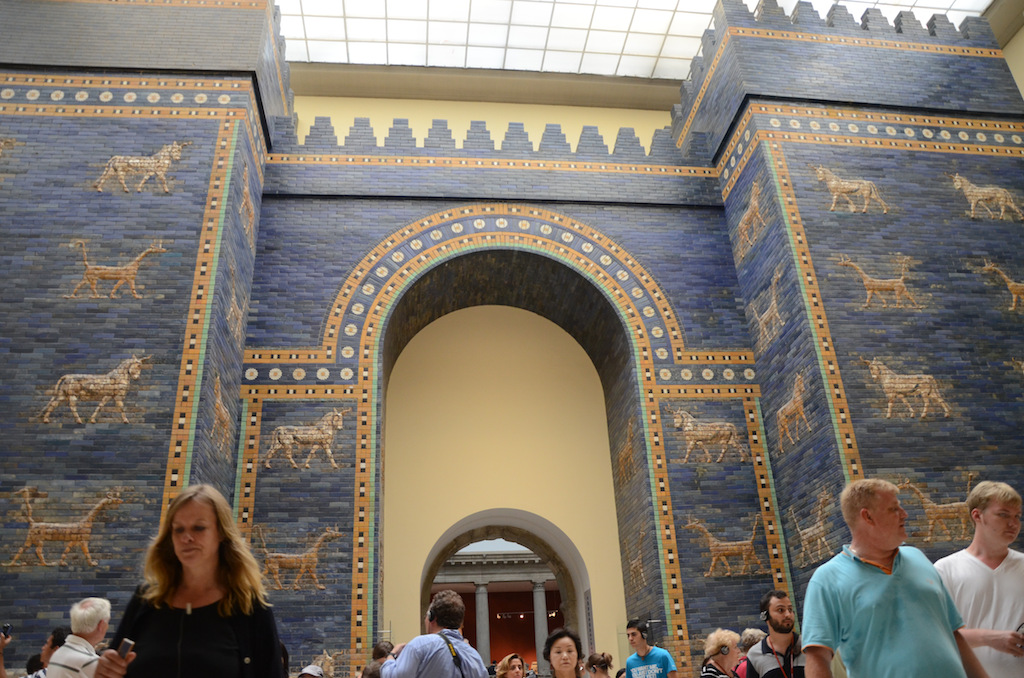
This structure was part of the northern gate of Babylon city, and was constructed by King Nebuchadnezzar around 575 BC. This structure is the inner gate: there was also a larger outer gate, which was 20 m high. Together, the two gates formed a spectacular entrance into the city that was 45 metres long, which made it very secure. The German team that discovered the remains of the Ishtar Gate was led Robert Koldewey. They began work on the site of Babylon in 1899, and spent 14 years excavating, after which Koldeway said they had only done half of the work that was needed.
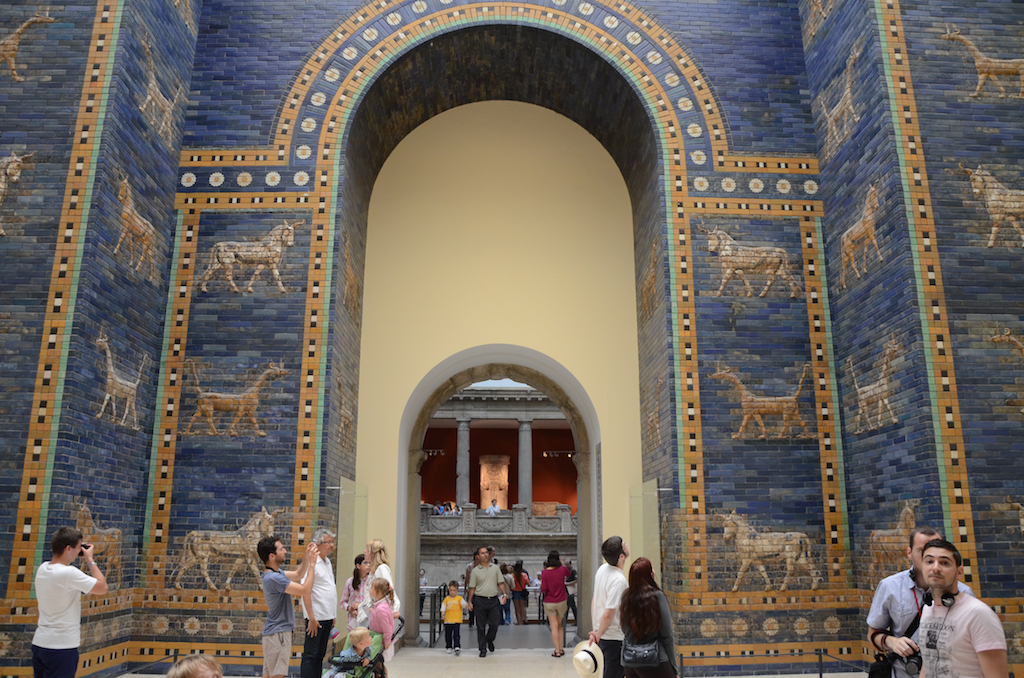
The façade is decorated with figures of bulls, representing the weather god Adad, and dragons (Mušḫuššu), representing the chief god – and god of the city of Babylon – Marduk. But Nebuchadnezzar dedicated the gate to Ishtar, who is not represented on it.
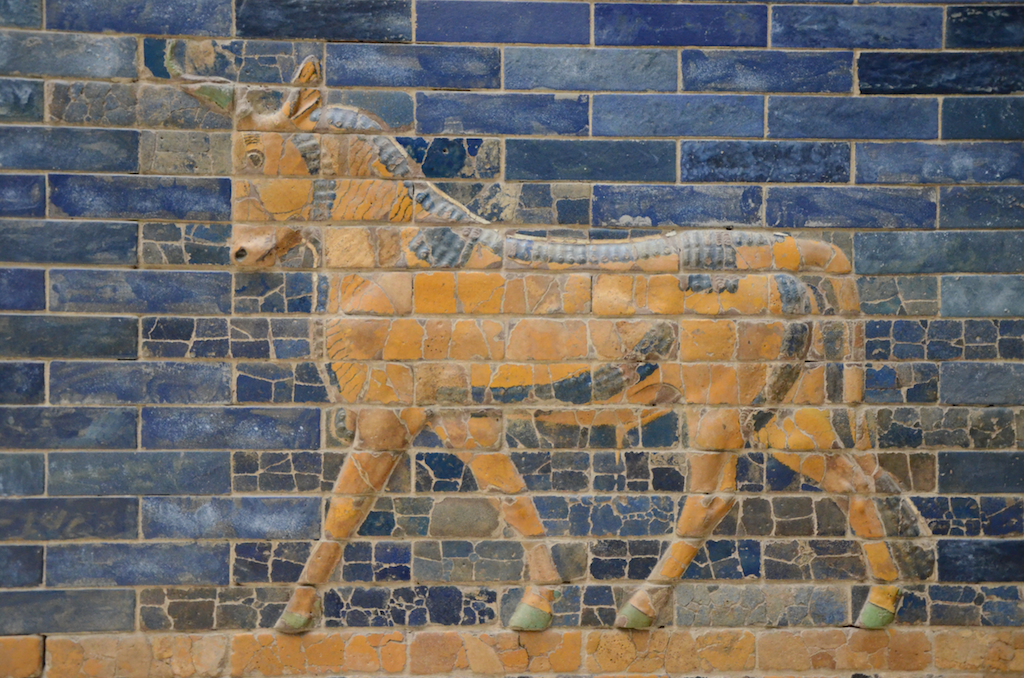
The mušḫuššu is a hybrid creature with head of a snake, a lion's body and forelegs, the talons of an eagle for its back legs, and scorpion stings in their tails.
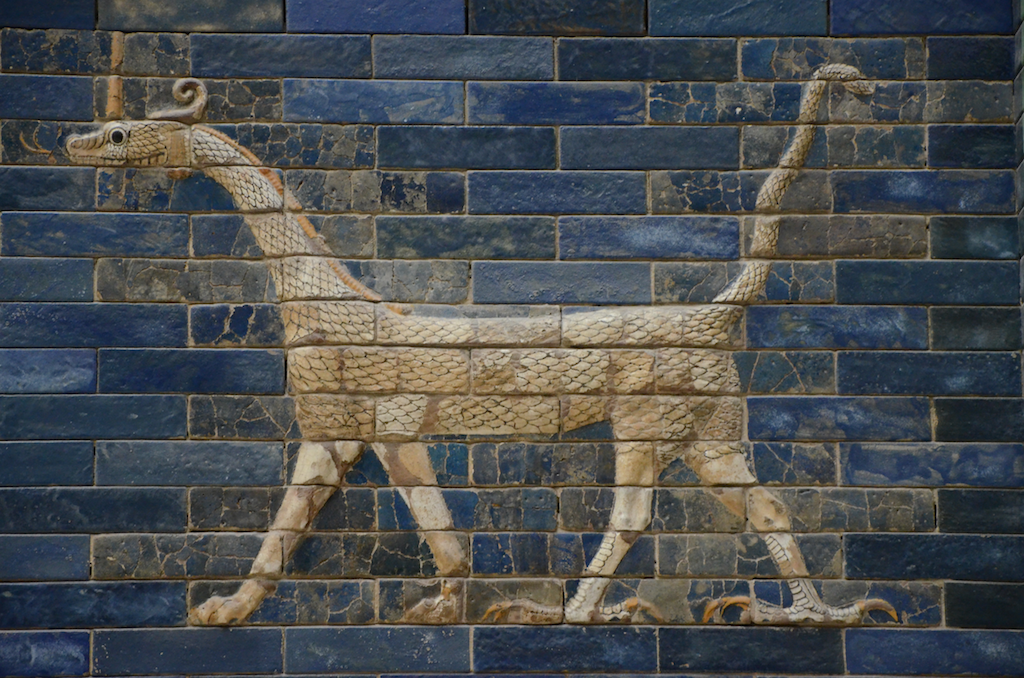
To the left of the gate is a inscription about the building and dedication of the gate.
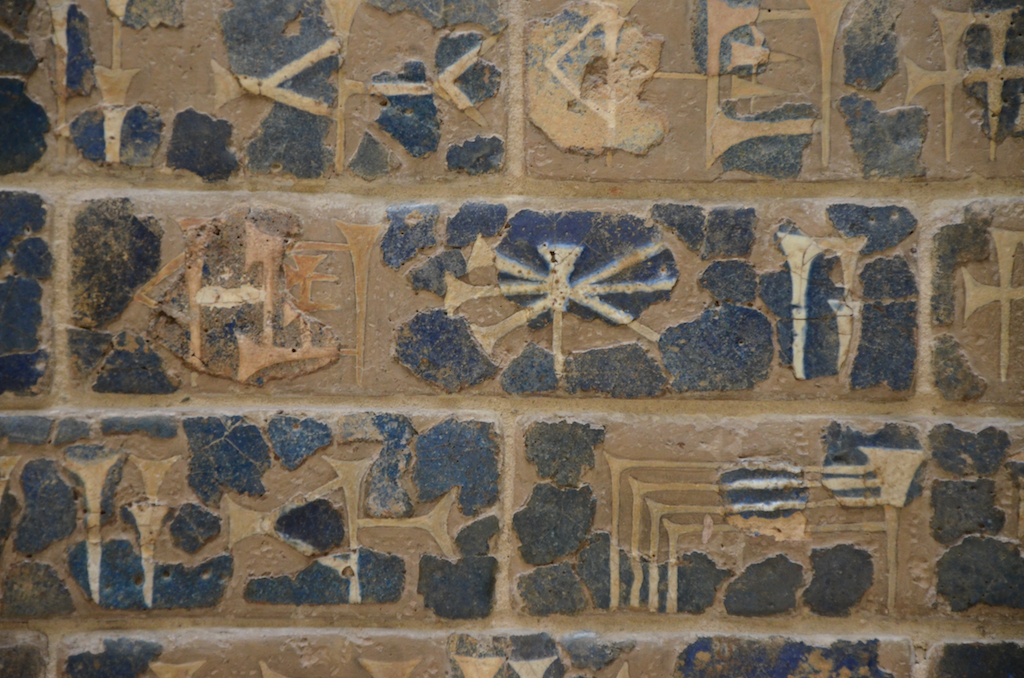
The Ishtar Gate was the main gate of the city and it led on to the processional way, which was about 25 metres wide and 180 metres long, and decorated with a frieze of walking lions. The Pergamum Museum has reconstruction of part of the processional way, leading off from the room containing the Ishtar Gate.
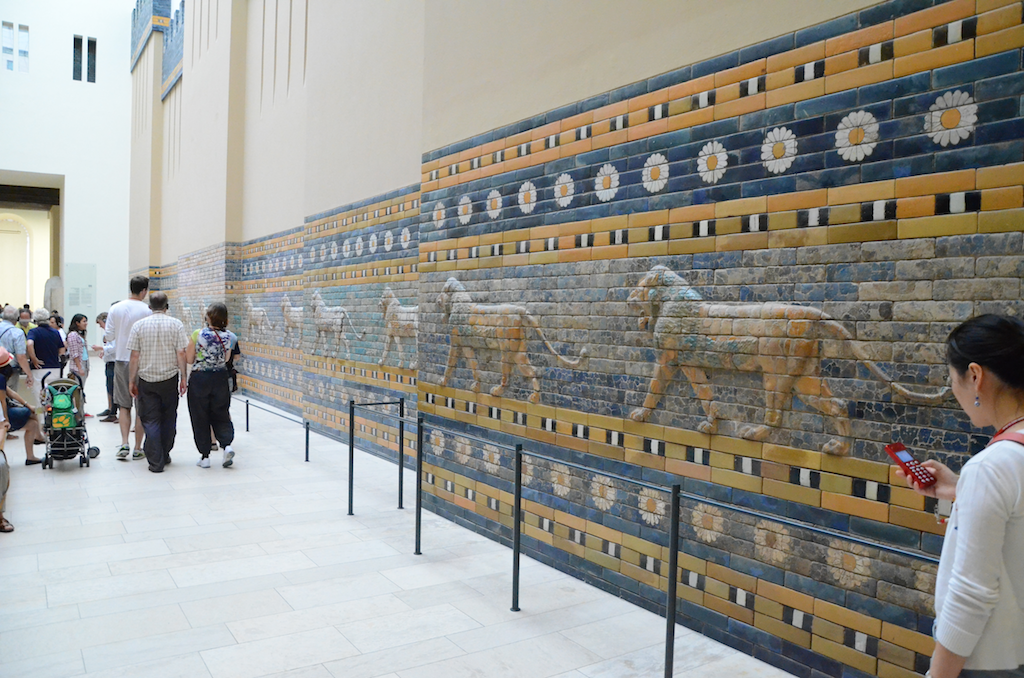
The lion is probably the most well-known image from these structures, so I was surprised to discover that it doesn't feature on the gate itself (since I have seen suggestions that lions are associated with the goddess Ishtar), but in the processional way and in Nebuchadnezzar's throne room (the Pergamum Museum has two sections of decoration from the throne room, using the same glazed tiles as the Ishtar Gate).
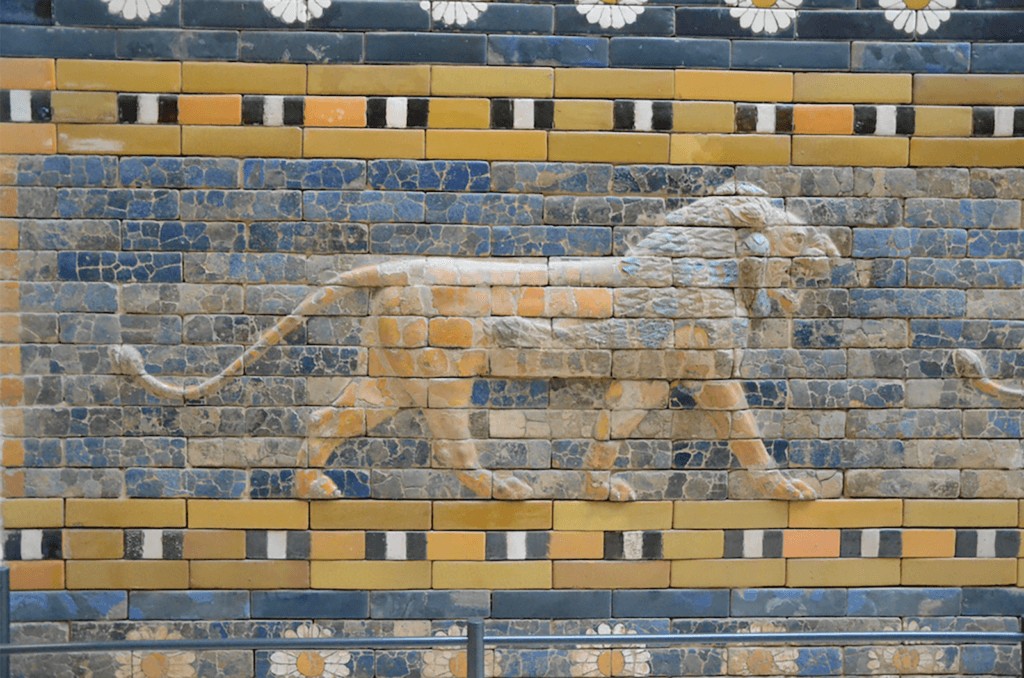
Nebuchadnezzar exiled many people from Judah in 605 BC, 597 BC, 587 BC, and 582 BC (Daniel 1; 2 Kings 24 – 25; Jeremiah 52). We don't know whether all the exiles would have been taken first to Babylon city, or whether most were taken directly to their designated locations. Certainly King Jehoiachin and members of his court went to Babylon in 597 BC. They would probably entered through the northern gate of the city, but not through the Ishtar Gate, at least in this form, since it wasn't built at that point. They would certainly have seen it at some point during their years in the city, though.
Glazing tiles requires high temperatures: could it be the purpose of the furnace mentioned in Daniel 3?